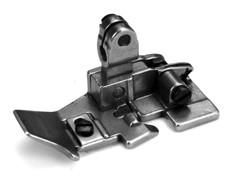

His partner Willcox welcomed him warmly, telling him that the company had prospered nicely in his absence. When the war ended, Gibbs donned a borrowed suit and ventured north to see what, if anything, remained of his sewing machine business. Having contracted typhoid and pneumonia early on, he laid low for most of the war, but fought when called upon to defend his home ground in June of 1864, at the Battle of Piedmont. With the coming of the Civil War, Gibbs distanced himself from his northern partners, returning to Rockbridge County. Due to its simple mechanics, the device cost less to produce than other machines and therefore could be priced less expensively -$50, as compared to twice that for a new Singer - just as its inventor had intended. Their company still produces commercial sewing machines today.During the next several years, the Willcox & Gibbs sewing machine hit the market and caught on. Borrowing a suit and walking from Virginia to the Willcox and Gibbs offices in New York City after the war, he reunited with his partner who had preserved Gibbs' stake in the company. Interestingly, the American Civil War separated the partners for a time, and as a Southerner, Gibbs lost most of his wealth. He partnered with James Willcox, and they began producing machines under the Willcox and Gibbs name in late 1858.

Convinced his method was better, he created his own prototype and patented the design in 1857. A couple of years later, he saw a Singer sewing machine in a store and immediately felt it was too cumbersome and expensive. He devised a way to create a hook that allowed the machine to produce a chain stitch with a single thread. In the early 1850s, James Edward Allen Gibbs saw an engraving of the top part of a sewing machine and set to work figuring out the parts he couldn't see in the picture.


 0 kommentar(er)
0 kommentar(er)
